Ready for your SB 721 inspection by licensed architects and structural engineers?
To start your inspection process fill out the “Free Quote” form or give us a call.
02
Project Details and Schedule Inspection
We will contact you to discuss details of your specific project, send you a proposal, and schedule your inspection.
03
Meet Our Licensed Inspector
Our team of professional licensed engineers and architects will meet you on site and perform a comprehensive inspection.
04
ReceiveDetailed Report
We will provide a detailed report of the inspected elements and provide repair recommendations.
SB 721 - Frequently Asked Questions
“Exterior Elevated Elements” mean those components that extend beyond the exterior walls of the building to deliver structural loads to the building from decks, balconies, stairways, walkways, and their railings, that have a walking surface elevated more than six feet above ground level, that are designed for human occupancy or use, and that are supported in whole or in substantial part by wood or wood-based products and their associated waterproofing system.

The new requirements apply to Exterior Elevated Elements (EEEs) that have a walking surface elevated more than six feet above ground level, are designed for human occupancy or use, and are supported by wood or wood-based products.
Owners of multi-unit apartment buildings with exterior elevated elements which are located more than six feet above adjacent grade, such as decks or stairways, must hire a licensed professional to perform a safety inspection.
The purpose of the inspection is to determine that exterior elevated elements and their associated waterproofing elements are in a generally safe condition, adequate working order, and free from any hazardous condition caused by fungus, deterioration, decay, or improper alteration to the extent that the life, limb, health, property, safety, or welfare of the public or the occupants is not endangered.
A sample of at least 15 percent of each type of exterior elevated element shall be inspected. The inspection shall be completed by January 1, 2025, and by January 1 every six years thereafter.
the required safety inspection must be completed by January 1, 2025, and by January 1 every six years thereafter.
1. The current condition of the exterior elevated elements.
2. Expectations of future performance and projected service life.
3. Recommendations of any further inspection necessary.
1. The report recommends immediate repairs, advises that any building assembly poses an immediate threat to the safety of the occupants, or that preventing occupant access or emergency repairs, including shoring, are necessary.
2. The report recommends corrective work to an exterior elevated element that does not pose an immediate threat to the safety of the occupants.
1. An exterior elevated element that the inspector advises poses an immediate threat to the safety of the occupants, or finds preventing occupant access or emergency repairs, including shoring, or both, are necessary, shall be considered an emergency condition and the owner of the building shall perform required preventive measures immediately. Immediately preventing occupant access to the exterior elevated element until emergency repairs can be completed constitutes compliance.
2. The owner of the building requiring corrective work to an exterior elevated element that, in the opinion of the inspector, does not pose an immediate threat to the safety of the occupants, shall apply for a permit and correct the condition within 30 days of notice.
The continued and ongoing maintenance of exterior elevated elements in a safe and functional condition in compliance with EEE inspection law shall be the responsibility of the owner of the building.
If the inspector observes building conditions indicating that unintended water or water vapor has passed into the associated waterproofing system, potentially causing damage to the load-bearing components, the inspector may conduct a further inspection. It is entirely up to the inspector’s discretion. The inspector must use their best professional judgment to determine the need, scope, and extent of any additional inspection.
Contact Medro Engineering specialist today for a free consultation and more information on how SB 721 will affect you and your HOA.
Medro Engineering will perform comprehensive inspection to guarantee the safety of EEE components, ensuring their compliance with the relevant local building codes in effect.
Quality that’s affordable
Excellent customer service and turnaround time
Ability to start a project whenever you are ready!
Licensed Professional (Engineers and Architects)
Qualified Professionals for SB 721 Inspection
In the past, deck and balcony failures have resulted in thousands of injuries annually. The purpose of SB 326 is to find any Exterior Elevated Elements (EEE) that are decaying or in disrepair, make any necessary repairs, and stop failures from happening before anyone gets hurt.
A licensed architect or structure engineer, such as the team at Medro Engineering is required to carry out visual inspections under the SB 721 law.

